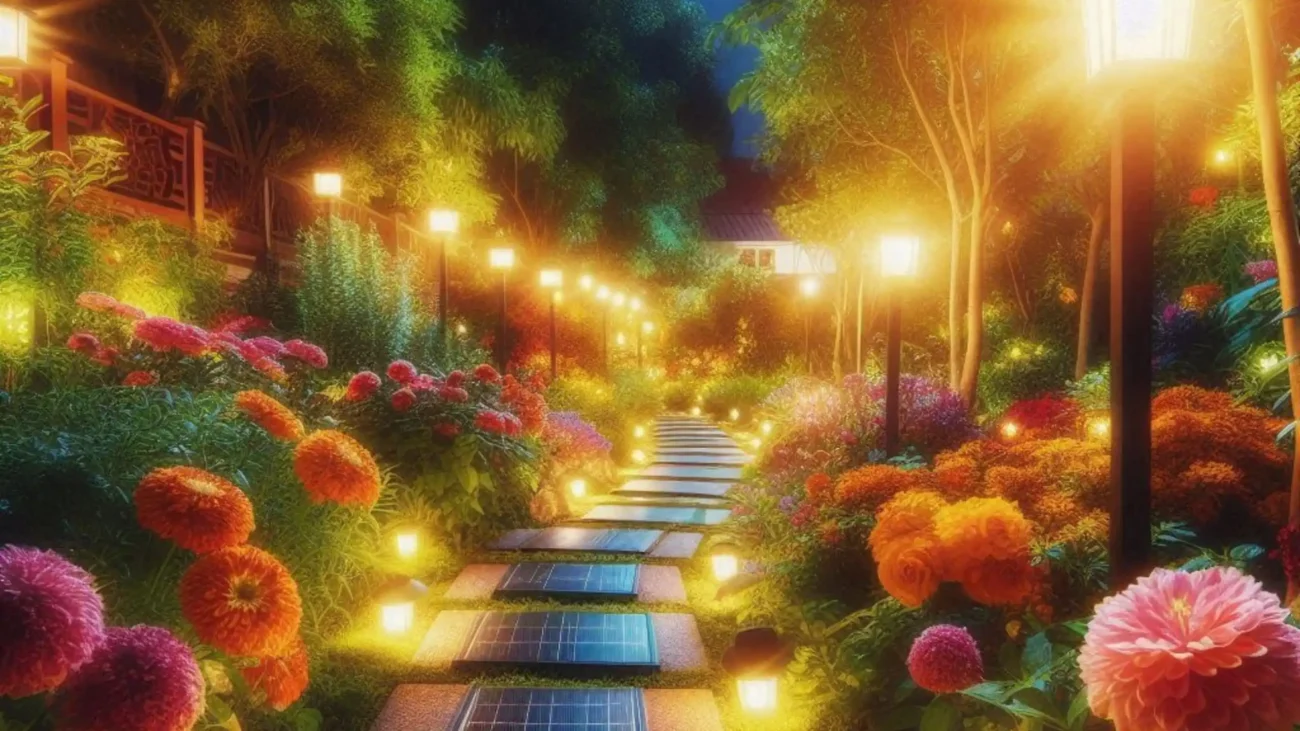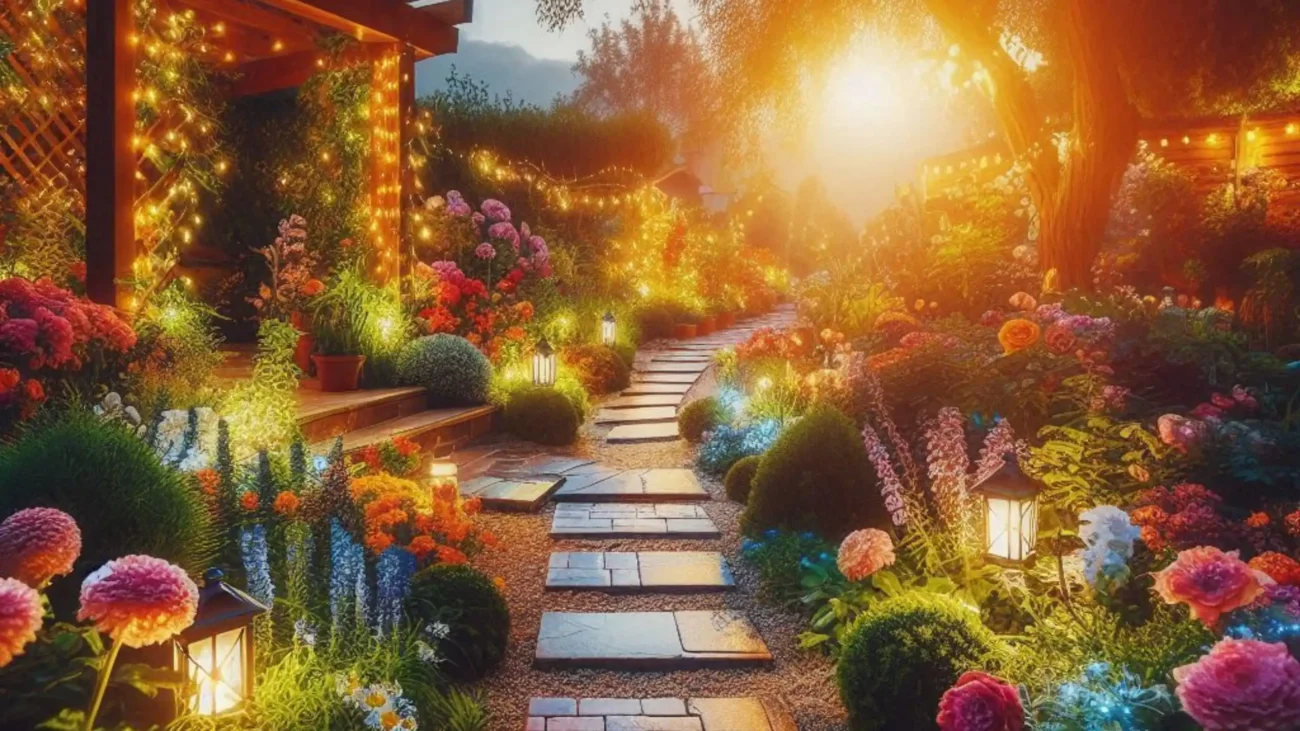When it comes to illuminating your outdoor pathways, choosing the right lumens is crucial for both aesthetics and safety. This comprehensive guide delves into the factors you need to consider to select the best lumens for pathway lights, ensuring that your outdoor spaces are both beautifully lit and secure. Solar Gadget
In This Post
Understanding Lumens: The Basics
Lumens measure the total amount of visible light emitted by a source. Unlike watts, which indicate energy consumption, lumens directly relate to brightness. Thus, understanding lumens is essential in selecting the right lighting for your pathways. Solar Gadget Reviews
Why Lumens Matter for Pathway Lights
Pathway lights serve dual purposes: enhancing visibility and adding to the landscape’s aesthetic appeal. Too few lumens can make paths dim and unsafe, while too many can cause glare, disrupting the serene environment. Striking the right balance is key.

Optimal Lumens for Different Pathway Scenarios
1. Residential Pathways
For most residential pathways, 100 to 200 lumens per light is ideal. This range provides sufficient brightness for safety without overwhelming the area. It creates a warm and welcoming atmosphere, perfect for homes.
2. Garden Paths
Gardens often require softer lighting to highlight flora and create a tranquil setting. 50 to 100 lumens per light is generally enough. This level ensures that plants are subtly illuminated without overpowering their natural beauty.
3. Driveways
Driveways need slightly brighter lighting for clear visibility. 200 to 300 lumens per light are recommended. This brightness level helps in navigating and parking vehicles safely, particularly at night.
4. Commercial Pathways
Commercial pathways, such as those in parks or public spaces, demand higher lumen levels due to increased traffic. 300 to 400 lumens per light are advisable, ensuring the area is well-lit and safe for all users.
Factors Influencing Lumen Selection
1. Purpose and Functionality
Consider the primary purpose of your pathway lights. For purely decorative purposes, fewer lumens might suffice, whereas functional lighting for safety requires higher lumen outputs.
2. Ambient Lighting
The existing ambient lighting impacts how many lumens you need. Well-lit areas may only need a supplement of lumens, while darker zones require higher lumens to achieve the desired brightness. Blog
3. Light Placement and Spacing
The placement and spacing of lights affect the overall illumination. Closer spacing and strategic placement can achieve uniform brightness with fewer lumens. Conversely, widely spaced lights might necessitate higher lumen outputs.

Types of Pathway Lights and Their Lumen Outputs
1. Solar Pathway Lights
Solar lights are popular for their eco-friendliness and ease of installation. They typically range from 5 to 200 lumens. Choose solar lights with higher lumens for areas that require more illumination.
2. LED Pathway Lights
LED lights are efficient and long-lasting. They offer a wide range of lumen outputs, from 50 to 300 lumens or more. LEDs are ideal for all types of pathway lighting needs due to their versatility.
3. Low Voltage Pathway Lights
Low voltage lights are commonly used in landscape lighting. They typically provide 100 to 200 lumens per light, striking a good balance between brightness and energy consumption. Solar Guides
Calculating the Total Lumens Needed
To determine the total lumens required, multiply the number of lights by the lumens per light. For example, a pathway with 10 lights at 100 lumens each requires 1000 lumens in total.
Choosing the Right Color Temperature
Besides lumens, color temperature plays a crucial role in the ambiance of your pathways. Measured in Kelvin (K), the color temperature affects the hue of the light.
- Warm White (2000K-3000K): Ideal for creating a cozy and inviting atmosphere.
- Cool White (3100K-4500K): Suitable for more modern and crisp lighting effects.
- Daylight (4600K-6500K): Best for high visibility and functionality.

Tips for Installing Pathway Lights
1. Plan Your Layout
Sketch out your pathway and plan where each light will be placed. Consider factors like obstacles, desired brightness, and spacing. Gadgets For Travelers
2. Test Before Finalizing
Test the lights in their intended positions before permanently installing them. This allows you to make adjustments for optimal lighting.
3. Regular Maintenance
Regularly check and maintain your pathway lights to ensure they remain functional and effective. Clean the fixtures and replace any faulty bulbs promptly.
Energy Efficiency and Sustainability
Opt for energy-efficient lighting options like LED or solar-powered lights. These not only reduce energy consumption but also have a lower environmental impact. LEDs, for example, consume less power and have a longer lifespan compared to traditional incandescent bulbs.
Conclusion
Selecting the best lumens for pathway lights involves balancing brightness, functionality, and aesthetics. By considering the specific needs of your pathways and the factors outlined in this guide, you can achieve the perfect illumination for safety and beauty. Remember to choose energy-efficient options and maintain your lighting system regularly for long-lasting performance.

FAQs on the Best Lumens for Pathway Lights
What are lumens, and why are they important for pathway lights?
Lumens measure the total visible light emitted by a source, indicating its brightness. For pathway lights, choosing the right lumen level ensures adequate illumination for safety and aesthetics. Too few lumens result in dim lighting, while too many cause glare. Optimal lumen levels balance visibility and ambiance.
How many lumens are recommended for residential pathway lights?
For residential pathway lights, 100 to 200 lumens per light is recommended. This range provides sufficient brightness for safety and enhances the aesthetic appeal of the area without overwhelming it.
What is the optimal lumen range for garden paths?
The optimal lumen range for garden paths is 50 to 100 lumens per light. This range provides subtle illumination, highlighting plants and features without overpowering the natural beauty of the garden.
How bright should driveway lights be?
Driveway lights should be 200 to 300 lumens per light. This brightness level ensures clear visibility for safe navigation and parking, particularly at night.
What lumen level is suitable for commercial pathways?
For commercial pathways, a lumen level of 300 to 400 lumens per light is suitable. This range provides adequate brightness to ensure safety and visibility in high-traffic areas.
How does ambient lighting affect the lumen requirement for pathway lights?
Ambient lighting impacts the lumen requirement for pathway lights. Well-lit areas may only need a supplement of lumens, while darker zones require higher lumen outputs to achieve the desired brightness. Balancing ambient and pathway lighting ensures optimal visibility and aesthetic appeal.
What types of pathway lights are available, and how do their lumen outputs compare?
Types of pathway lights include:
Solar Pathway Lights: 5 to 200 lumens, eco-friendly and easy to install.
LED Pathway Lights: 50 to 300+ lumens, efficient and long-lasting.
Low Voltage Pathway Lights: 100 to 200 lumens, balance between brightness and energy use.
How do I calculate the total lumens needed for my pathway?
To calculate the total lumens needed for your pathway, multiply the number of lights by the lumens per light. For example, if you have 10 lights at 100 lumens each, you need a total of 1000 lumens (10 lights x 100 lumens = 1000 lumens).
What color temperature is best for pathway lights?
The best color temperature for pathway lights depends on the desired ambiance:
Warm White (2000K-3000K): Creates a cozy and inviting atmosphere.
Cool White (3100K-4500K): Provides a modern and crisp lighting effect.
Daylight (4600K-6500K): Offers high visibility and functionality.
What are the benefits of using energy-efficient lighting for pathways?
Using energy-efficient lighting for pathways offers several benefits:
Lower Energy Consumption: Energy-efficient lights like LEDs consume less electricity compared to traditional bulbs, reducing utility costs.
Longer Lifespan: LED lights have a longer operational lifespan, minimizing the frequency of replacements and maintenance.
Environmental Impact: Reduced energy consumption lowers greenhouse gas emissions and decreases your carbon footprint.
Cost Savings: Over time, energy-efficient lighting translates into significant savings on electricity bills.
Enhanced Safety: Consistent and reliable illumination from energy-efficient lights improves visibility and safety on pathways.
How should pathway lights be spaced and installed for optimal lighting?
To achieve optimal lighting with pathway lights, follow these guidelines for spacing and installation:
Spacing: Place pathway lights about 6 to 8 feet apart. This spacing provides adequate illumination without creating overly bright or dark spots.
Height: Install lights at a height that allows the light to spread evenly across the pathway without causing glare.
Direction: Position lights to direct their beams downward towards the pathway rather than upwards or sideways, ensuring effective lighting.
Consistency: Maintain consistent spacing and alignment throughout the pathway to create a uniform and visually appealing lighting scheme.
Power Source: Ensure pathway lights are connected to a reliable power source or consider solar-powered options for eco-friendliness and ease of installation.
Following these steps ensures that pathway lights not only enhance visibility but also contribute to the overall aesthetic and safety of your outdoor space.
Can I mix different types of pathway lights?
Yes, you can mix different types of pathway lights to achieve a customized lighting setup. For example, you can combine solar pathway lights with low voltage or LED lights. This approach allows you to leverage the strengths of each type, such as energy efficiency, brightness levels, and installation convenience. Mixing different types of pathway lights can create a layered lighting effect that enhances both functionality and visual appeal in your outdoor space.
